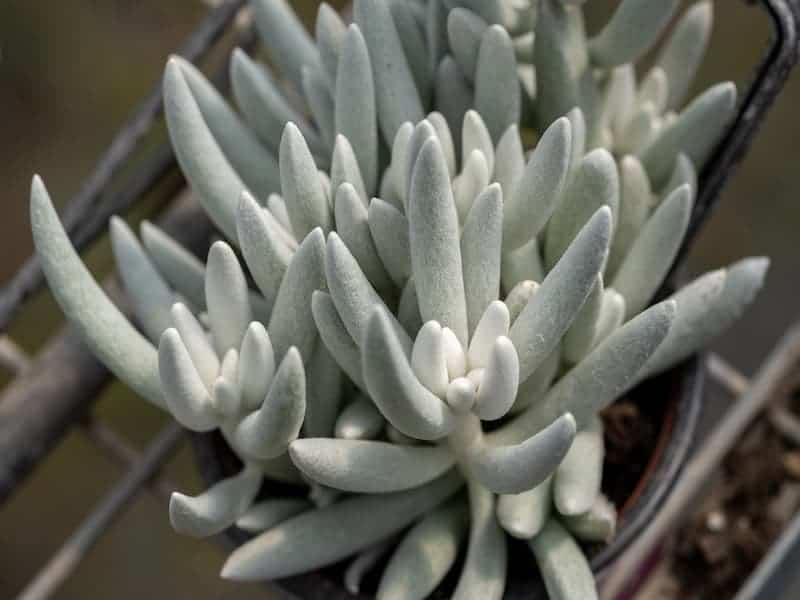
Senecio haworthii is otherwise known as the cocoon plant. It is a rare succulent native to South Africa.
I have covered everything you need to know about senecio haworthii in this article, from how to care for it to propagation and more. For this article’s purpose, I will be referring to this unique succulent by its street name cocoon plant as, let’s face it, it is less of a mouth full than senecio haworthii. Enjoy!
Jump to:
Description
| Name: | Senecio Haworthii |
| Soil: | Sandy porous soi |
| Blooming: | Winter and Summer months |
| Light: | Full sun to partial shade |
| Water: | When the soil is completely dry |
| Propagation: | Stem and leaf cuttings and offsets |
The cocoon plant is a fuzzy, matted perennial succulent that can be found in the Cape province of South Africa. It is a low-growing succulent with white leaves and fluffy silver hair that is perfect for growing in hot climates.
This drought-tolerant plant is ideal for a container garden, and you can also plant it in rock gardens. If you plant a cocoon plant in your garden, you can expect it to grow up to 30 cm tall and spread 30 cm wide.
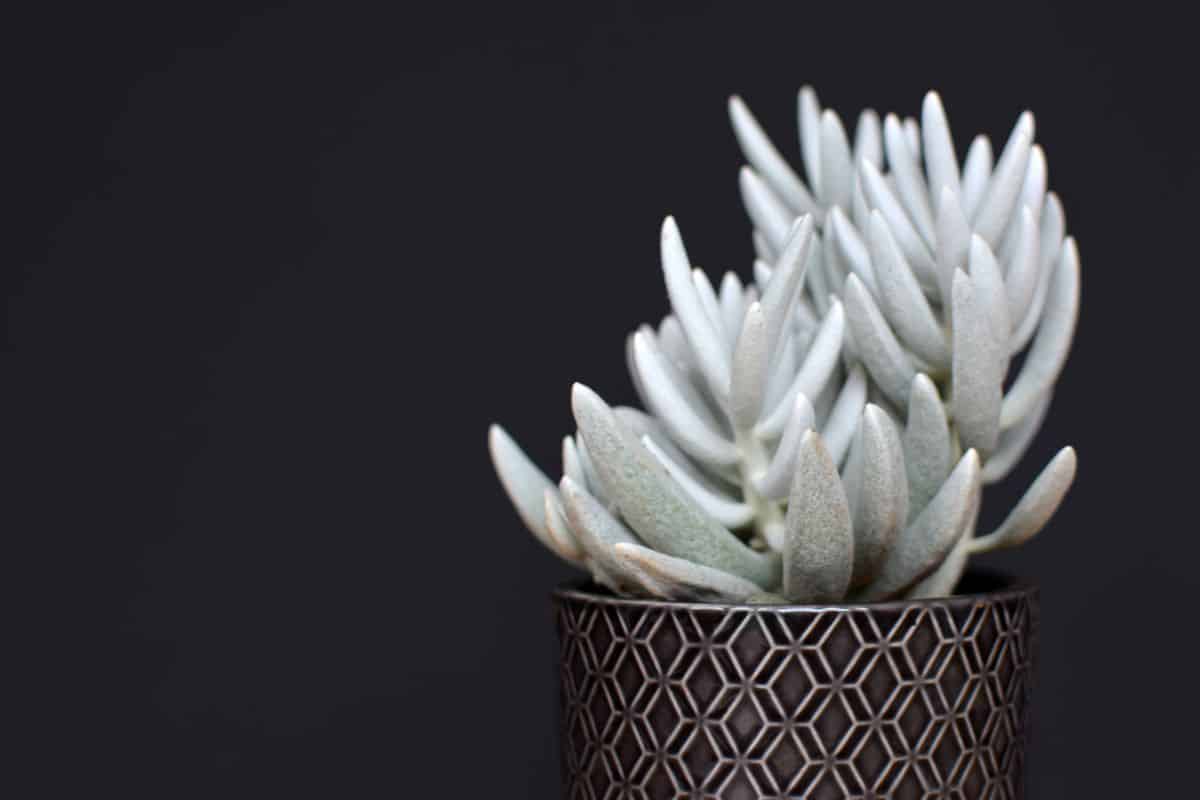
Buy it from:
Cultivars and Hybrids
Plants such as the alworthia ‘black gem’ succulent are a hybrid of Aloe speciosa and senecio haworthii. Due to the cocoon plants’ interesting features and unique look, cultivars like to use it to produce striking hybrids.
Care
Similar to most drought-tolerant succulents, the cocoon plant is very easy to care for. It is a well-known fact that cacti and succulents are ideal for plant “neglecters” as over fussing often causes irreversible damage to the succulent.
The needs of succulent plants are very different from the needs of other houseplants you have in your home. They do not need to be watered every day, and they certainly don’t need to be given fertilizer regularly either. In order to care for your plant properly, take note of the care guidelines below.
Light
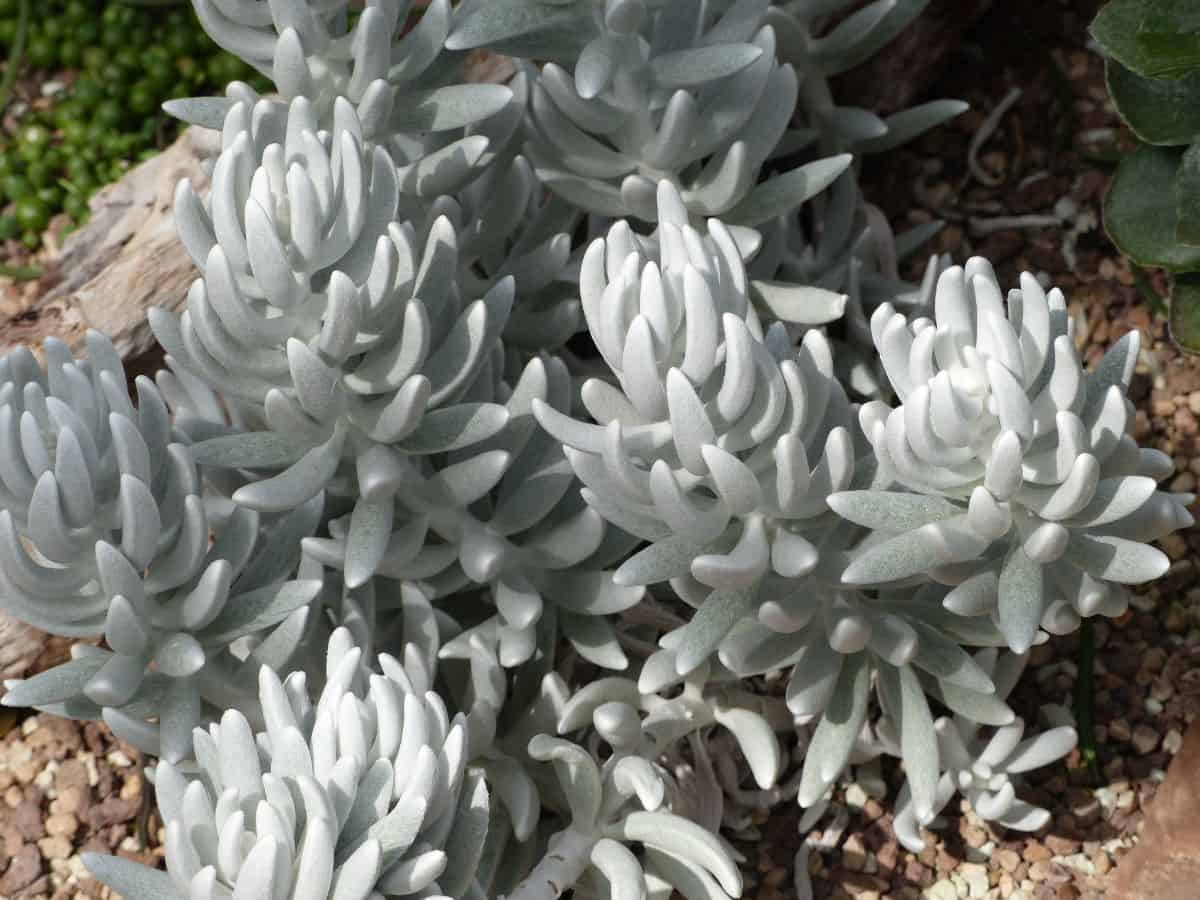
No products found.
The cocoon plant needs to grow in full sun or partial shade. Your plant should get at least four to six hours of sunlight every day to survive. Because these succulents are low-growing and look brilliant in small pots dotted around your home or office, it is vital to think about where you are placing them strategically.
Anyone looking to plant their cocoon succulent in a container or rock garden, make sure that you place the plant in a sunny location in the garden. It is important to mention that strong sun exposure for longer than six hours every day could lead to sunburn and permanent scarring.
Take a look at the following signs of not enough sunlight and too much sunlight:
Signs Your Plant isn’t Getting Enough Sunlight:
- Wilting
- Yellowing
- Dull color
- Stunted growth
Signs Your Plant is Getting Too Much Sunlight:
- Black leaves
- Thick skin
- Dry leaves
- Shriveled leaves
Water
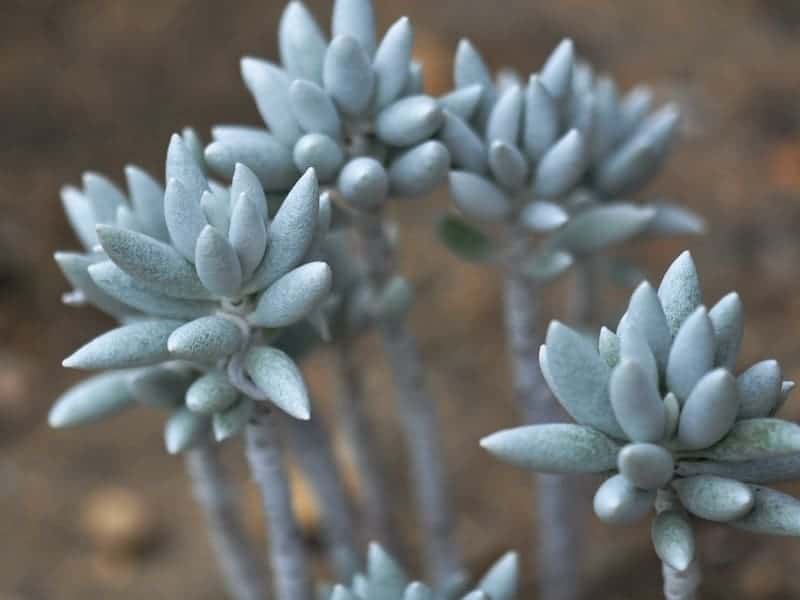
If you are familiar with caring for succulents, then you can follow the typical succulent water needs for the cocoon plant. Use the ‘soak and dry’ method and only re-water your plant when the soil is completely dry.
Overwatering is one of the biggest cocoon succulent killers. It is vital that you do not follow a regular watering schedule for these succulents. Instead, check the soil’s moisture levels by poking your finger in the top two inches of the soil to see if it is dry enough to water again.
Temperature
Are you planning on growing this succulent outside? Unfortunately, this is one of the most frost-hating succulent species around. It is not cold hardy, and can not stand below-freezing temperatures for longer than an hour or so.
Do not grow the cocoon plan in temperatures below 30° F or -1.1° C. if the climate in your area reaches these temperatures regularly you should grow your cocoon succulents indoors.
Soil
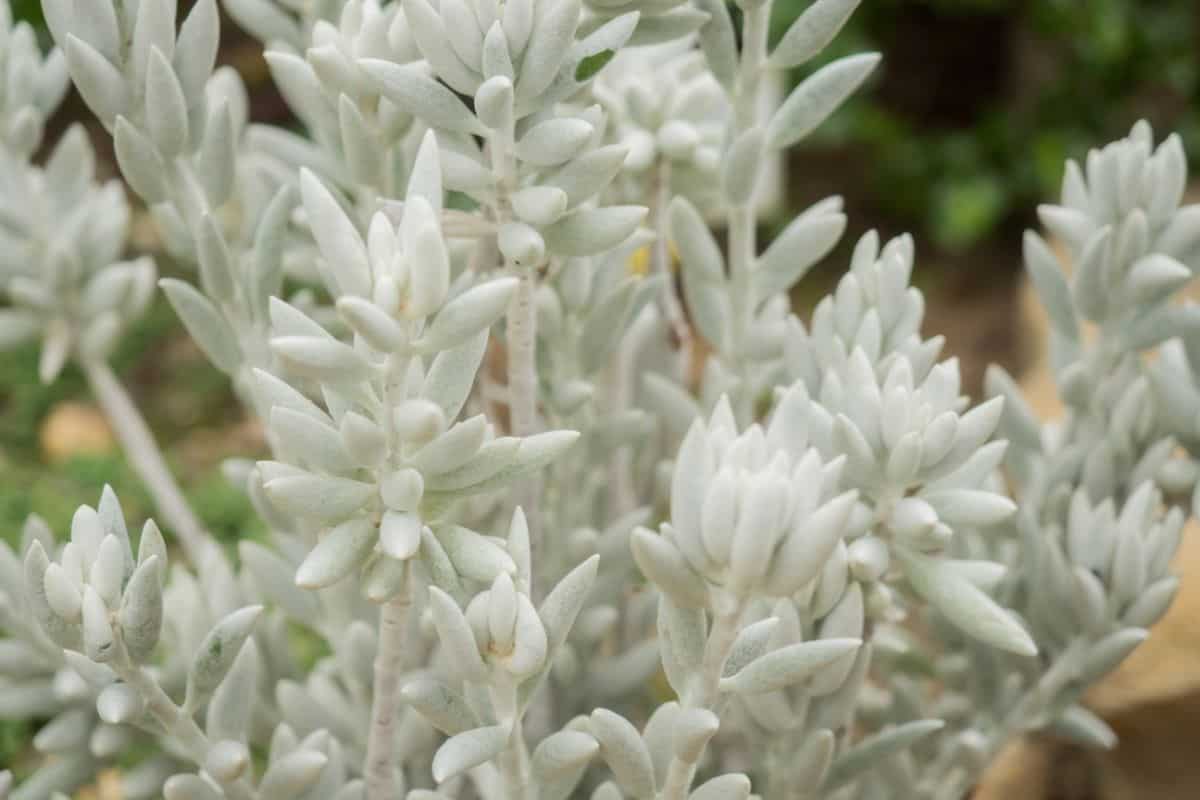
Make sure you pot your cocoon plant in sandy porous soil that is low in nutrients. If you buy your senecio haworthii from a garden center, make sure you re-pot the succulent in cactus potting soil as garden centers and other plant stores don’t always plant them in the best soil for the plant species.
Placing small rocks on top of the soil will help with water drainage too. This layer of rocks is called a top-soil, and as well as looking esthetic and decorative, it helps keep the plant healthy long-term.
Top Tip: Make sure you pot your cocoon plant in a pot with sufficient drainage holes. If the pot you choose to plant it in does not have good drainage, you can always drill new holes in the base of the pot.
Propagation
There is nothing more rewarding than propagating your plant. Cocoon plants can be propagated from leaves and stem cuttings. This succulent propagates very well from leaf cuttings in particular. Here is a step-by-step guide to propagating a cocoon plant from leaves:
- Gently twist and remove a healthy leave from the parent plant.
- Check the leaf. If the leaf is damaged, or even a small part of the leaf is left on the stem, you will need to dispose of this leaf and start again.
- Let the leaf dry out for a couple of days.
- Place it on well-drained soil.
Seeds
Do not expect your senecio haworthii to produce viable seeds. This succulent species rarely produce seeds that germinate. If you want to try growing cocoon plants from seeds, you should purchase seeds from a reliable garden center and plant them in well-drained cactus soil about one inch deep.
Cuttings
If you want to grow cocoon plants from cuttings rather than propagate them from leaves, then you can very easily. Cocoon plant stem cuttings are very easy to re-plant and grow if you follow the steps below:
- Use a sterile pair of scissors or a sterile sharp knife and remove a healthy stem from the main plant.
- Leave the stem to dry out and callous for at least a week.
- Place the stem in well-drained soil and water it when the soil has completely dried out.
Offsets
There are many reasons succulent growers want to get rid of offsets from the main plant. If your plant is growing in a dainty pot, offsets can look particularly messy and unappealing. Another common reason to want rid of offsets is for propagation. Regardless of your reason, here is how to remove the cocoon plant offset without harming the main plant.
- Remove the offset with a sharp and sterile knife. Make sure you cut the offset at the base of its stem.
- If you want to propagate your cocoon plant using the offset cutting, you should leave the offset to dry out for about four days in a cool, dry place.
- Plant the offset in sandy porous soil or in cactus potting soil.
- Water the offset whenever the soil is completely dry.
- Wait a few weeks and let the roots develop before re-potting the offset in a pot or container of your choice. The offset should have well-established roots before it is re-potted.
Common Pests and Problems
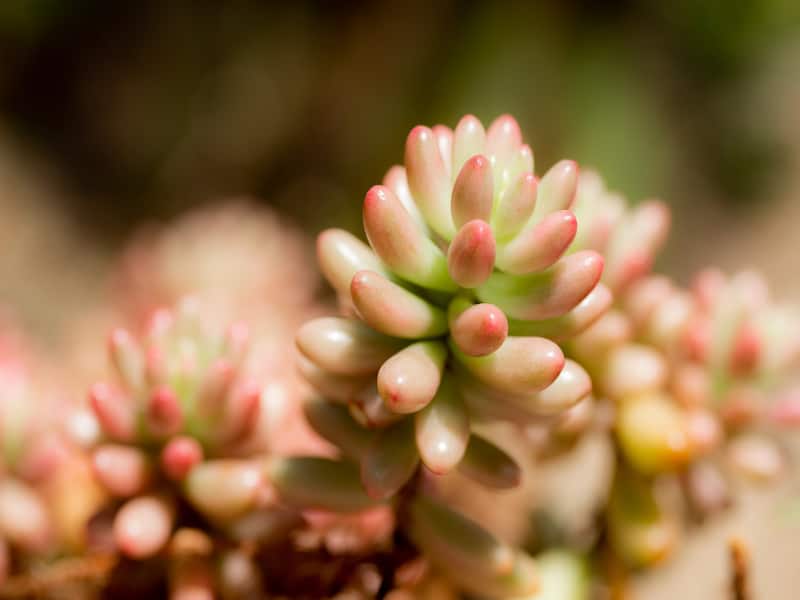
Succulents and cacti are natural pest repellents, but that doesn’t mean they are invincible. Cocoon succulents are prone to pests like aphids that love to lurk around the base of the succulent.
The best way to check if you have a pest infestation is to examine the plant on a regular basis. Remove any pests by hand and use natural or organic pesticides to keep pests at bay.
Although cocoon plants are not prone to catching diseases, they are prone to root rot caused by overwatering the plant. Root rot often goes unnoticed until it is too late, so it is crucial that you follow the watering guidelines above to avoid this.
Here are some signs that your plant is suffering from root rot:
- Soggy leaves
- Wilting
- Black or brown in color
- Stunted growth
Here is how to tackle root rot if you come across it:
- Remove black or brown parts of the plant. Make sure that you remove an extra millimeter or so of the healthy plant to ensure you don’t leave behind any of the damaged sections.
- If most of the plant is discolored or soggy, look for a leaf or stem that is still healthy and follow the propagation steps listed above to re-grow the plant using cuttings, offsets, or stems.
- Remove the plant from the soil, re-plant in well-drained cacti soil or sandy soil, and not water the plant for a few days.
- Take a look at the pot that your plant is sitting in. Does it have enough drainage holes? If it does not have sufficient drainage holes, pot your plant in a different pot, or drill new holes in the original pot.
Good luck with your senecio haworthii care; I hope the information in this article has helped you!
Sources:


